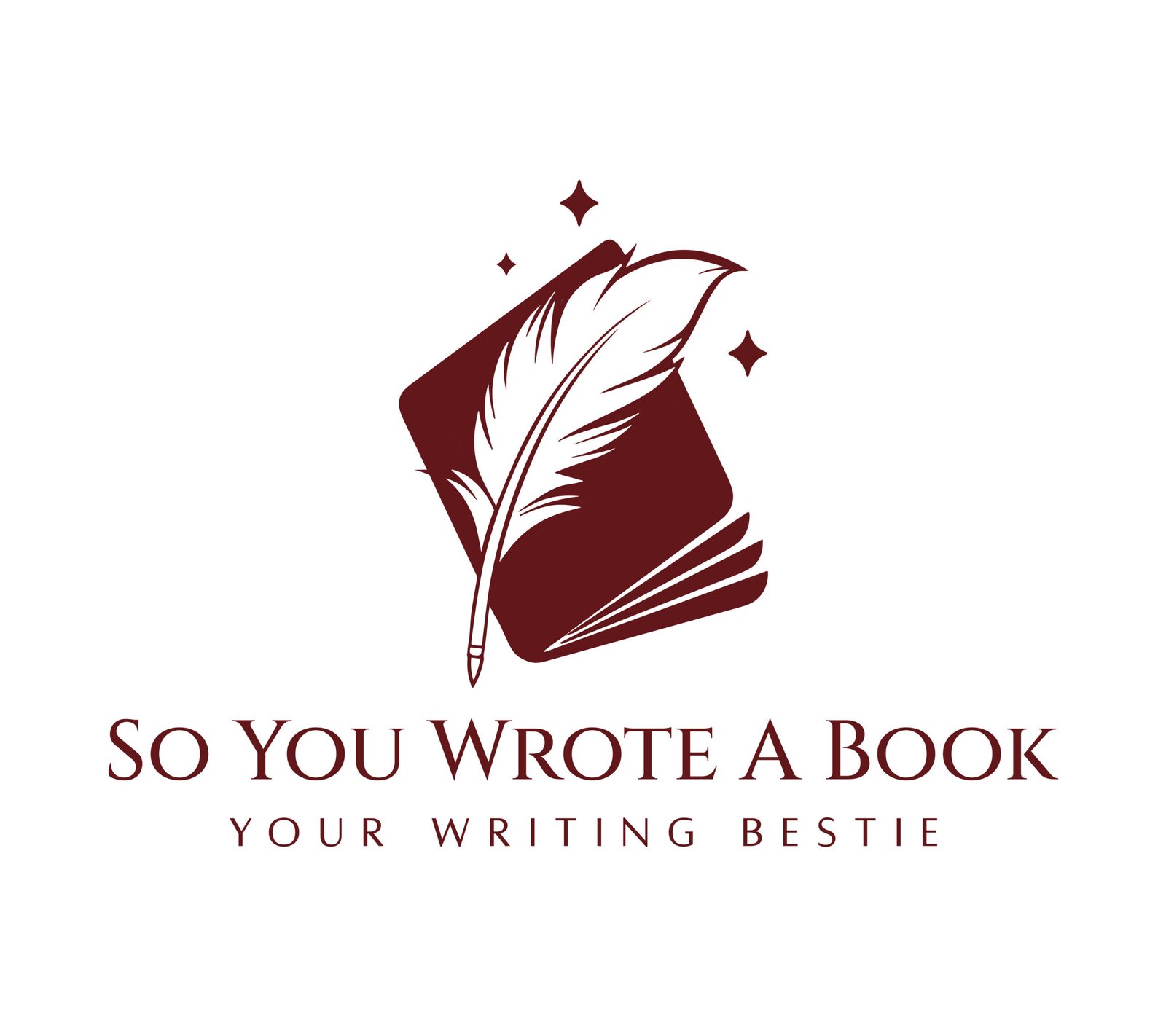The publishing industry is f*cking confusing.
There. We said it.
It’s seriously one of the most all-over-the-place industries we’ve ever heard of. But you know what? That doesn’t necessarily mean it’s a bad thing. After all, we work in the industry and are hands down in love with it, and anyone who writes, reads, or edits is a part of it, too. Yay!
The reason Abbie started So You Wrote A Book was because she wrote her own novel and literally had to ask herself, what the hell comes next?
She tried to Google ‘what comes next after writing a novel’ and was struck with a web of confusing remarks, statements, and facts from all sides of the industry. It was confusing af.
Now, Abbie has several internships, a Masters in Editing and Publishing, and a world of knowledge behind her. Though the industry is still sometimes confusing, she has a pretty good idea of how things work.
If you’re in the same boat as she was all those years ago, let’s debunk all 14 of the most common publishing myths so you don’t face the same confusion.

1. Publishing myth: Traditional book publishing equals success
We’re going to break your hearts here, but here’s the real killer about the publishing industry: traditionally, publishing a book does not equal success. Not even close.
Many traditionally published books do not achieve significant commercial success. Many won’t make enough money to quit their day jobs, many won’t get signed for a second book, and many will struggle ever to write again. Ahh!
Unfortunately, there is no rhyme or rhythm to what will be successful and what won’t upon getting signed with a publisher. Sure, the marketing, sales, and publicity teams all try to work their magic to get books on the right side of sales and success, but not all of them will succeed.
It’s heartbreaking to realise, but it’s the truth.
Quite often, success in the publishing industry is, unfortunately, just luck.
2. Publishing myth: It’s easy to get a book published
Getting a book traditionally published is far from easy, and it can be a challenging and competitive process. Here are some reasons why:
- High Competition: Publishers receive a large number of submissions (like, really freaking large), but they only publish a fraction of them. In fact, some statistics say that less than 1% of all manuscripts submitted to publishers actually get published. This means that your chances of being accepted are incredibly low (sorry to break your heart here). But that’s okay! There are so many other routes to publishing a book!
- Subjectivity: Publishing is subjective, and what one publisher may love, another may reject. Even if your book is well-written and has potential, it may not fit with the specific preferences or needs of a particular publisher at a given time. It often isn’t personal, and more often than not, it actually has nothing to do with your book or the quality of your writing. After all, publishers can only take on books they think will sell to a certain market at a certain time. It’s usually a game of marketing and politics.
- Market Trends: Publishers consider market trends and commercial viability when acquiring books. They may be more inclined to publish books in popular genres or those with a strong potential for sales. Publishers often won’t take on books from new authors because they’re harder to sell. They often won’t take on books that are similar to any they have previously published if the book didn’t sell well. They look at what other publishers are publishing. They also account for the sales and figures of other books in the same genre. There are dozens (maybe even hundreds) of factors involved!

3. Publishing myth: Traditional publishing is the only path to success
Though many of you probably know this, traditional publishing is not the only path to success!
Self-publishing has become a really popular option recently, with platforms like Kindle Direct Publishing (KDP) offering opportunities for authors to reach wide audiences.
Hybrid publishing has also picked up steam recently. It combines elements of traditional and self-publishing. Authors may pay a publisher to assist with certain aspects of the publishing process, such as editing or design, while retaining more control over the final product than in traditional publishing and having the benefit of professionals to back them in the process. Hybrid publishers often have selective criteria for the books they accept and may offer more favourable terms than vanity publishers.

4. Publishing myth: You need an agent to get published
While it’s not strictly necessary to have a literary agent to get published, having one can significantly increase your chances of success, especially in traditional publishing. There are many other ways you can get your work in front of a publisher, though, so having an agent isn’t the only path to traditional publishing success, such as:
- Pitch Days (or speed-pitching).
- Contacts/friends/associates you have already in the industry.
- Being discovered through your online presence, such as blogs, social media, self-publishing, etc.
- Articles you may have written in magazines or short stories you’ve published
- Unpublished manuscript awards
- Television
- Conferences/professional gatherings (non-fiction/academic, romance society conferences, etc)
- The infamous slush pile
While having a literary agent can be advantageous, it’s important to note that not all authors choose to work with one. Some authors prefer to pursue self-publishing or submit directly to publishers without representation. Ultimately, whether or not you need an agent depends on your individual goals, preferences, and the specific circumstances of your writing career.

5. Publishing myth: Self-publishing means lower-quality
One of the biggest publishing myths I’ve come across over the last few years is that self-publishing means lower quality or less than traditional publishing.
This couldn’t be more wrong! Both traditional publishing and self-publishing have their own merits and drawbacks, and the quality of a book can vary widely regardless of the publishing route.
Here are some points to consider:
- Quality Control: In traditional publishing, books typically go through a rigorous editorial process, including developmental editing, copyediting, and proofreading, which can help ensure a high level of quality. However, this doesn’t guarantee that all traditionally published books are of superior quality. In self-publishing, authors have the responsibility to ensure the quality of their work. This may involve hiring professional editors, proofreaders, and designers to help produce a polished and professional product. Many self-published authors invest in these services to ensure their books meet industry standards, the same as any publishing house.
- Creative Control: Traditional publishing often involves collaboration with editors, designers, and marketers employed by the publishing house. While this can lead to a polished final product, it may also involve compromises in creative control. Some authors prefer the autonomy and creative freedom that self-publishing affords, allowing them to retain control over every aspect of their book’s production.
- Distribution and Marketing: Traditional publishers have established distribution channels and marketing resources that can help promote a book and reach a wider audience. However, not all traditionally published books receive extensive marketing support, and some may struggle to find readers despite being well-written. In self-publishing, authors have the opportunity to take a hands-on approach to marketing and promotion. While this requires effort and investment on the part of the author, it also allows for more direct engagement with readers and greater flexibility in marketing strategies.
Ultimately, the distinction between traditional publishing and self-publishing is not a binary one of quality but rather a matter of different approaches to publishing. There are high-quality books and poorly written books in both traditional and self-publishing. What matters most is the quality of the writing, storytelling, and presentation, regardless of how a book is published.

6. Publishing myth: Writing is the hardest part
While writing a story is undeniably a hard part of publishing, the real adventure begins once the ink dries on the manuscript!
Editing. The bane of most writer’s existence. It probably takes 1000X more mental energy and time to edit a book than it does to write one.
Then, you finish your novel. After maybe 3+ drafts, several rounds of self-edits, some Beta Readers, and countless other things, you’ve arrived at the publishing point.
And then comes marketing, perhaps an even worse part of writing a book. Regardless of whether you want to self-publish or traditionally publish your book, marketing and self-promotion are going to be required. I know; the introvert inside you is screaming!
Writing a book might seem hard, but compared to all the other facets of actually finishing your book? It’s a piece of cake!

7. Publishing myth: You’ll get rich from book sales
While some authors achieve significant financial success, many do not.
The number of authors who become rich solely from selling books is relatively small compared to the total number of authors. While some authors achieve significant financial success and become wealthy from their book sales, the vast majority of authors earn modest incomes or may even struggle to make a living solely from writing. Many of your favourite authors are probably still working day jobs!
Authors who become ‘rich’ from book sales often fall into categories such as bestselling novelists, prolific writers of popular series, celebrity authors, or authors of highly successful non-fiction books. These authors may benefit from substantial advances, lucrative book deals, movie or television adaptations, and ongoing royalties from book sales.
It’s important to note that achieving financial success as an author typically requires a combination of factors, including talent, dedication, perseverance, market demand for the type of books being written, effective marketing and promotion, luck, and sometimes even timing.
While becoming rich from selling books is possible, it’s unfortunately not the norm for the majority of authors.

8. Publishing myth: Once traditionally published, your book will be in bookstores everywhere
This is another huge publishing myth! Once traditionally published, whether your book will be available in bookstores everywhere depends on various factors, including:
- Publisher Distribution: The distribution network of the publisher plays a significant role. Major publishers often have extensive distribution networks that can get books into many bookstores across the country and sometimes internationally. Smaller or independent publishers may have more limited distribution networks.
- Marketing and Promotion: The publisher’s marketing efforts can influence the visibility and availability of your book in bookstores. Books that receive significant marketing support are more likely to be displayed in bookstores and more likely to be purchased.
- Author Reputation and Demand: Established authors with a large readership and demand for their books are more likely to have their books stocked in bookstores nationwide. New or unknown authors might initially have limited distribution until they build a readership.
- Genre and Niche: The genre or niche of your book can also impact its availability in bookstores. Some genres have more demand and are more likely to be stocked by bookstores, while others might have a smaller audience and less shelf space dedicated to them.
- Bookstore Policies: Individual bookstore policies and preferences can affect whether they choose to stock a particular book. Some bookstores may focus more on local authors or specific genres, while others prioritize bestsellers or books from major publishers.
9. Publishing myth: You need a massive social media following to succeed
Having a massive social media following is not a strict requirement for publishing a book, whether traditionally or self-published. While a strong social media presence can certainly be beneficial in marketing and promoting your book, especially in the realm of self-publishing where authors often take on a significant portion of the marketing responsibilities, it is not the sole determinant of publishing success.
Here’s why:
- Traditional Publishing: While having a large social media following can help demonstrate your ability to engage with an audience and potentially market your book, traditional publishers consider the quality of your manuscript, the marketability of the book, and your potential as an author. While a social media following can be a bonus, it’s not always a deciding factor in the acquisition process.
- Self-Publishing: In self-publishing, authors have more control over their marketing efforts, including leveraging social media platforms to reach readers. While a sizable social media following can be advantageous in promoting your book and driving sales, it’s not the only avenue for marketing success. Authors can also explore other marketing strategies such as email newsletters, book signings, blog tours, and collaborations with influencers or book reviewers.
10. Publishing myth: Publishing is a quick process
Publishing, whether traditional or self-publishing, is a lengthy process. Not involving the time it took for you to write, edit, rewrite, edit, and on and on, the publishing process can take years! Obviously, self-publishing has a little more give because you are in control of the timeline, but in traditional publishing, it can sometimes take years before your book is on the shelves!

So, what do you think about these publishing myths? Was there anything that surprised you? Do you have anything else that should be on the list?
Happy writing, xoxo





